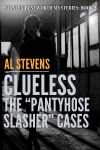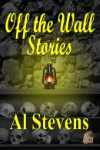The Eyes Have It
A figure-making associate asks why I put wooden eyes in a Rickie-Tik that originally had glass eyes.
He read somewhere that doing things like that—installing non-original equipment—reduces the value of an antique as a collectible. There is truth in that. But only to an extent when it comes to ventriloquist dummies.
As I reported earlier, the pale gray glass eyes I removed may not be original; they don't fit the eye sockets. The eyes are oval, a common shape for doll eyes, and the sockets are cut to accept spheres. Those ovals just didn't fit. Plus, the restored Rickie-Tik looked sickly with those gray eyes.
But maybe they are original. Maybe Marshall had only oval gray eyes in his inventory and the customer wanted gray eyes.
But maybe again they aren't original. Maybe the original brown eyes were too stark against the glossy white clown makeup, and whoever modified him simply changed the eyes. Or the live clown upon whom which the figure was based had gray eyes. Or an eye broke in a fall and gray was the only color the repairman had.
But any of these scenarios or even something we haven't thought of could be the real story. We'll never know.
Another clue that maybe someone replaced the original eyes: The texture of plastic wood filler that held them in place looked newer than wood filler I found in other parts of the head.
All that notwithstanding, Ricky-Tik now has brown eyes. Just like new. They are indeed wooden, which makes them less likely to break. This is a working figure, not a museum piece. It will see service as a ventriloquist's partner, not sitting on a shelf only to be admired and never again to speak. Delicate is the last quality you want in a working dummy, vintage or otherwise.
This issue reminds me of one that comes up among collectors and restorers of antique automobiles. Purists express horror when a pragmatist installs shatterproof window glass and sealed-beam headlights into a vintage car. How could they do that? And why? Because they want to drive the old car is why.
But do wooden eyes really reduce the value of a vintage figure? Not really. Some Rickie-Tiks had original wooden eyes. One Marshall brochure advertises glass eyes, but other literature doesn't mention them. Such as this ad:

For a few extra bucks, you could have optional moving eyes, which would not likely be installed with glass eyes. Just try drilling a hole through a light bulb.
It's not like the replacement eyes are welded in the head and impossible to replace. If this figure with durable wooden eyes ever finds its way into a private collection, a quick trip to the workshop restores the eyes to glass. Pop those offending wooden eyes out, and insert proper glass ones. Value restored. One simple procedure and the purists, the obsessed, and even the anal retentive can relax. It's not difficult. Even a collector could do it.
He read somewhere that doing things like that—installing non-original equipment—reduces the value of an antique as a collectible. There is truth in that. But only to an extent when it comes to ventriloquist dummies.
As I reported earlier, the pale gray glass eyes I removed may not be original; they don't fit the eye sockets. The eyes are oval, a common shape for doll eyes, and the sockets are cut to accept spheres. Those ovals just didn't fit. Plus, the restored Rickie-Tik looked sickly with those gray eyes.
But maybe they are original. Maybe Marshall had only oval gray eyes in his inventory and the customer wanted gray eyes.
But maybe again they aren't original. Maybe the original brown eyes were too stark against the glossy white clown makeup, and whoever modified him simply changed the eyes. Or the live clown upon whom which the figure was based had gray eyes. Or an eye broke in a fall and gray was the only color the repairman had.
But any of these scenarios or even something we haven't thought of could be the real story. We'll never know.
Another clue that maybe someone replaced the original eyes: The texture of plastic wood filler that held them in place looked newer than wood filler I found in other parts of the head.
All that notwithstanding, Ricky-Tik now has brown eyes. Just like new. They are indeed wooden, which makes them less likely to break. This is a working figure, not a museum piece. It will see service as a ventriloquist's partner, not sitting on a shelf only to be admired and never again to speak. Delicate is the last quality you want in a working dummy, vintage or otherwise.
This issue reminds me of one that comes up among collectors and restorers of antique automobiles. Purists express horror when a pragmatist installs shatterproof window glass and sealed-beam headlights into a vintage car. How could they do that? And why? Because they want to drive the old car is why.
But do wooden eyes really reduce the value of a vintage figure? Not really. Some Rickie-Tiks had original wooden eyes. One Marshall brochure advertises glass eyes, but other literature doesn't mention them. Such as this ad:

For a few extra bucks, you could have optional moving eyes, which would not likely be installed with glass eyes. Just try drilling a hole through a light bulb.
It's not like the replacement eyes are welded in the head and impossible to replace. If this figure with durable wooden eyes ever finds its way into a private collection, a quick trip to the workshop restores the eyes to glass. Pop those offending wooden eyes out, and insert proper glass ones. Value restored. One simple procedure and the purists, the obsessed, and even the anal retentive can relax. It's not difficult. Even a collector could do it.

















